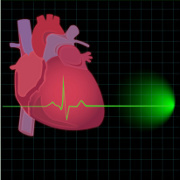 Photo: Getty Images
Photo: Getty Images
One of the risk factors for developing cardiovascular or heart disease is physical activity - or rather, the lack thereof. Physical activity is necessary to maintain good cardiovascular health. One of the challenges facing the heart conscious is not just in making time to get enough exercise, but ensuring that you’re also getting the right kind of exercise to maximize your cardiovascular health. With so many workout choices available – cycling, dancing, running, walking, team sports, for example - how do you know that your physical activity of choice is giving you the most benefit for your effort? Wouldn’t it be easier if your doctor could simply take a blood test and then write a "prescription" for a personalized exercise program that would produce results?
While it may sound like something out of science fiction, researchers at the KG Jebsen Centre of Exercise and Medicine believe that in the future it may be possible to prevent or even delay the development of cardiovascular disease through exercise programs based on individual genetic makeup. The KG Jebsen Centre of Exercise and Medicine is part of the Norwegian University of Science and Technology (NTNU). Working with data provided by more than 5,000 Norwegians ranging in age from 13 to 90 years, researchers examined the relationship between overall fitness and cardiovascular risk factors. The data compiled in this study is believed to be the largest data set in the world which is focused specifically on fitness levels.
As a result of the information gathered, researchers discovered that the levels of oxygen uptake, also referred to as VO2max or maximum oxygen consumption, decline in both men and women at a rate of approximately 5 percent every decade. According to NISMAT, the Nicholas Institute of Sports Medicine and Athletic Trauma, VO2max is the oldest and best measure of fitness and overall conditioning, human performance--that is, our capacity for “maximal work output,” and cardiovascular health. In general, the higher the VO2max number, the greater the individual’s capacity is for sustained work output for periods greater than one minute.
As a part of the study, researchers found:
• Participants with higher VO2max scores were less likely to have risk factors for heart disease
• Participants with lower than normal VO2max numbers were more likely to develop numerous risk factors for cardiovascular disease
• Even small declines in overall physical conditioning resulted in as much as a 60 percent increase in cardiovascular risk factors
The findings were true regardless of the age of the participant and serve to highlight the importance of physical conditioning to cardiovascular health.
Researchers are taking their study to the next level by examining potential genetic causes that might contribute to overall conditioning. By identifying genetic causes for poor conditioning outcome, individualized exercise programs can be "prescribed" by physicians so that individuals are able to gain greater cardiovascular health benefits from their workouts.Additional research is ongoing so look for more information from NTNU in the future.
For more information on NTNU, visit http://www.ntnu.edu/cerg
To find out your VO2max levels, check out the calculator at: http://www.ntnu.edu/cerg/vo2max
Sources:
NISMAT Exercise Physiology Corner: Maximum Oxygen Consumption Primer, NISMAT.org, 08 Mar 2007, http://www.nismat.org/physcor/max_o2.html
The Norwegian University of Science and Technology (NTNU) (2011, June 2). A magic number for heart health. ScienceDaily. Retrieved June 4, 2011, from http://www.sciencedaily.com/releases/2011/06/110602081417.htm
Journal References:
1. Bjarne M. Nes, Imre Janszky, Lars J. Vatten, Tom I. L. Nilsen, Stian T. Aspenes, Ulrik Wisløff. Estimating VO2peak from a Non-Exercise Prediction Model; the HUNT Study, Norway. Medicine & Science in Sports & Exercise, 2011; DOI: 10.1249/MSS.0b013e31821d3f6f
http://www.ncbi.nlm.nih.gov/pubmed/21502897
2. Stian Thoresen Aspenes, Javaid Nauman, Tom Ivar Lund Nilsen, Lars Vatten, Ulrik Wisløff. Physical Activity as a Long Term Predictor of Peak Oxygen Uptake. Medicine & Science in Sports & Exercise, 2011; DOI: 10.1249/MSS.0b013e318216ea50
http://www.ncbi.nlm.nih.gov/pubmed/21364479
Reviewed June 7, 2011
Edited by Alison Stanton





Add a CommentComments
There are no comments yet. Be the first one and get the conversation started!